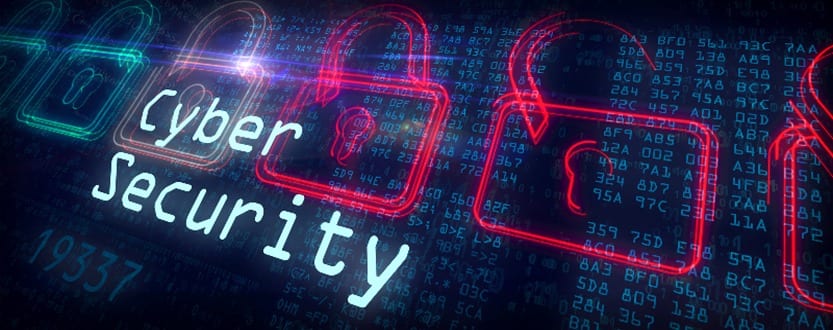What is the Cost of a Cyber Breach?
A hacker stealing your information during a cyber breach is a bad situation. However, a hacker stealing your business’s information might be worse.
Running a successful business always implies a degree of risk. However, in today’s day and age, companies are finding themselves encountering a form of risk that often goes unnoticed:
cyber attacks.
If a cyber criminal launches a cyber attack on your business the damage could be irreparable.
Think about it. A cyber attack leads to a huge loss of profit and productivity but thousands of dollars in fees. Not to mention the loss of business that follows.
The average cost from damage or theft of IT assets and infrastructure increased from $879,582 in 2016 to $1,027,053 in 2017. The average cost due to disruption to normal operations increased from $955,429 to $1,207,965.
Even worse than this,
according to Inc. 60% of all small business fail within 6 months due to cyber attacks.
41 percent of companies have over 1,000 sensitive files open to everyone, according to
research by the Varonis Data Labs.
How Do Cyber Attacks Work?
Cyber attackers look for unsecured folders the moment they gain access to a network. Why? Because folders open to global access groups. Global access groups include everyone, domain users and authenticated users. This gives them easy access to business plans, customer and employee data, credit card information and much more.
Overexposed data presents a huge risk to businesses of all sizes regardless of the industry or location. For small and medium size businesses, however, it could mean millions of dollars in losses, reimbursements, and legal fees that end up bankrupting the business.

What Are The Most Common Types of Attacks?
In the Ponemon study, 48 percent of small and medium sized businesses (SMB’s) report
social engineering/phishing were the most common kind of attack.
54 percent of respondents in the study claimed data breaches occurred due to negligent employees or contractor.
Cyber Attacks in Remote Work
Phishing attacks:
Phishing is considered the top cause of data breaches. Hackers send apparently legitimate emails with dangerous links or attached documents. When a target clicks on the link or opens the attachment, a hacker gains access to their device. The link will contain malware or ransomware that corrupts and freezes important data.
Employees might work on personal devices which might not have the same protections as a company owned computer. As a result, the personal device might be more vulnerable to malware and other viruses. Make sure you use a company issued device whenever possible. Not just for the sake of the company, but for the sake of the remote employee as well. No one benefits when a device is breached.
Insecure Passwords:
53 percent of people rely on memory to keep track of their passwords. Therefore, they choose passwords that are easy to remember. That makes it easy for a hacker to decipher an employees password by simply going through social media. It allows hackers to even access various accounts if the employee is using the same password.
Wi-Fi Security in a Remote environment:
In an office environment, IT departments can protect employees and control network security. In a remote environment, however, employees probably don’t have the same protections. Hackers exploit networks with WEP security protections rather than WPA2, for example. WEP settings are the standard Wi-Fi protection for average users.Even inexperienced hackers can download tools that allow them to break through this type of network.
Remote workers don’t realize how insecure they are until something happens. All remote employees need to consider what type of network they have at home before accessing company data. Using a VPN (virtual private network) also helps in protecting against certain types of attacks on remote workers.
During the lock-down period in 2020, there were record spikes in
cyber attacks on remote workers. Hackers leverage remote workers’ devices to gain access to systems that would otherwise be more secure.
The Damage You Don’t See
Even assuming an SMB survives a cyber attack financially, the reputational damage would be just as catastrophic.
Security is everything in a business, both internally and to prospective clients. If a cybercriminal hacks your business, exposing your data, no one will want to take the risk of doing business with your company. The perception that your business is unreliable or even a liability can destroy your credibility and tank your business completely.
In the worst of scenarios, you may not even notice you’ve been breached for weeks or months, at which point recovery will be next to impossible.
One of the reasons so many businesses fail is because they have an inadequate strategy for managing cyber attacks. SMB’s may have fire walls, anti-virus software, malware protection, and encryption but they don’t plan for the event of an actual breach.
While businesses focus on keeping attackers out, the actual data itself remains accessible and vulnerable to attack.
Businesses are losing more records in a data breach. Companies represented in the Ponemon study lost an average of more than 9,350 individual records as a result of a data breach in 2017, an increase from an average of 5,079 in the 2016.
A business needs a fully redundant system to access their applications and data and regular offline backups stored in multiple onsite and offsite locations.
Nerd Support’s experienced team can guarantee a secure business and keep your data safe. A breach doesn’t have to mean failure.
With a
business continuity plan that is tailored to your needs your needs, you can get peace of mind knowing your information is safe.
Contact us today for a FREE IT Test! Or call us at
305-551-2009.






